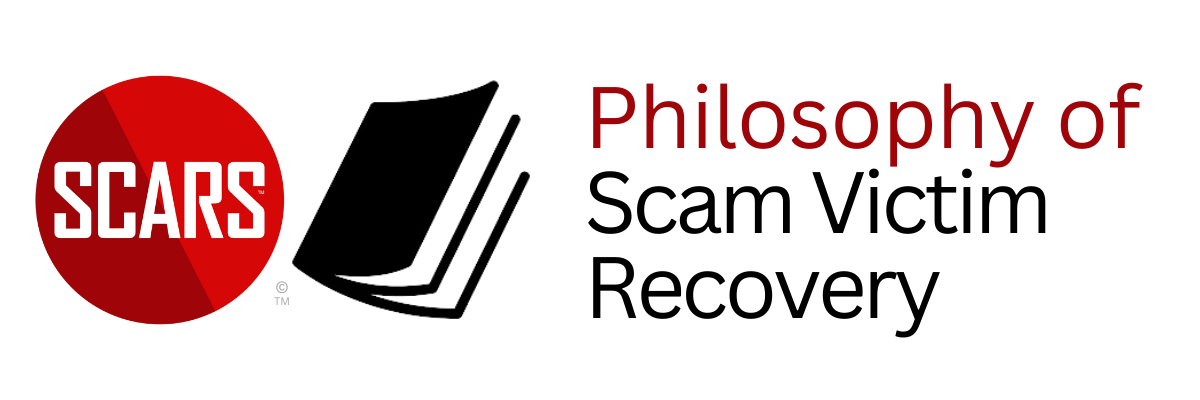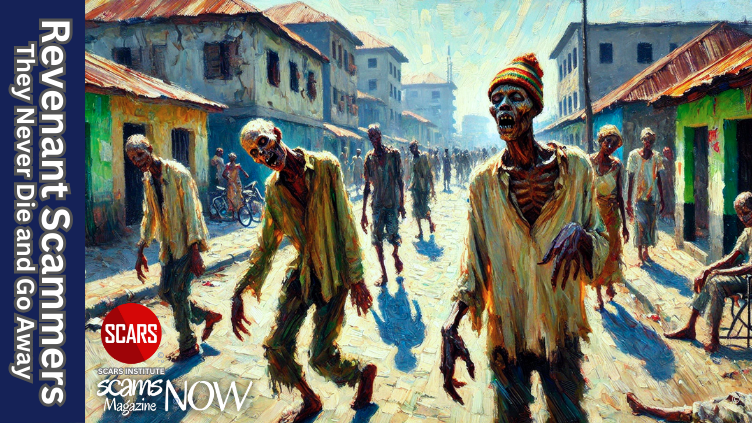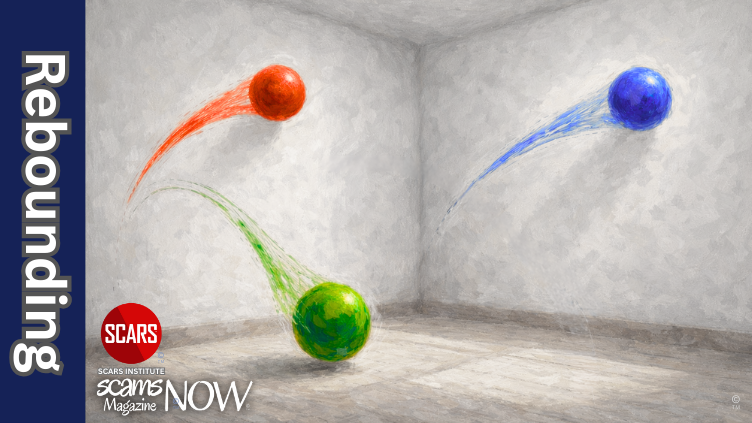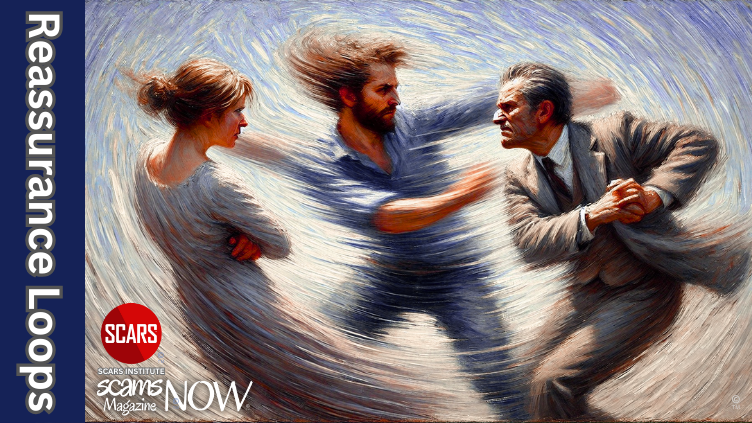
The Native American Navajo Concept of Hozho – A Path to Inner Balance
The Native American Navajo Concept of Hozho: A Path to a Balanced Recovery for Scam Victims
Primary Category: Scam Victim Recovery Philosophy
Author:
• Tim McGuinness, Ph.D., DFin, MCPO, MAnth – Anthropologist, Scientist, Polymath, Director of the Society of Citizens Against Relationship Scams Inc.
About This Article
The concept of Hozho, rooted in Navajo philosophy, offers scam victims a powerful path toward emotional and spiritual recovery. Rather than focusing on erasing the past, Hozho guides people to live in balance with it. Victims learn to restore harmony by tending to their mental health, rebuilding physical strength, deepening spiritual awareness, and reconnecting with a meaningful purpose. Each small step, walking outdoors, journaling, practicing mindfulness, or mentoring others, becomes an act of healing. Hozho reminds survivors that beauty and pain can coexist, and that peace is not something to wait for but something to live into every day. Healing becomes a way of life, not a single milestone. Scam victims are not asked to forget or suppress their suffering. They are invited to carry it differently, to walk forward with renewed clarity and inner peace. In choosing this path, they reclaim power from their past and learn to live fully in the present. Through Hozho, they do not just recover, they walk in beauty again.
Note: This article is intended for informational purposes and does not replace professional medical advice. If you are experiencing distress, please consult a qualified mental health professional.

The Native American Navajo concept of Hozho: A Path to a Balanced Recovery for Scam Victims
Understanding Hozho as a Path to Balance and Healing
The Navaho/Dine Hozho helps you to live in a world that often feels broken after a scam. Everything that once felt secure, your trust, your judgment, your emotional balance, gets pulled apart. In the Navajo tradition, there is a guiding concept called Hozho that helps people return to wholeness. Hozho is not just about being well or happy. It means living in a state of harmony, beauty, balance, and right relationship with your mind, body, spirit, and surroundings.
Navajo elders teach that Hozho is not a fixed place. It is a process, a way of walking through life. You move toward Hozho through intention, through care in your thoughts and actions, and through respect for yourself and your community. This concept touches every part of Navajo life. You find it in daily practices, healing ceremonies, prayers, and stories that remind you how everything connects.
The path to Hozho asks you to bring yourself back into alignment after disruption. That disruption may come from illness, conflict, loss, or, as in your case, betrayal through a scam. When your emotional world is thrown into chaos by fraud, you can use the principles of Hozho to slowly restore your balance. This idea encourages you to walk again in beauty, to step back into peace, and to remember that your healing is not separate from the world around you.
The Navajo prayer known as the Beauty Way reminds you of this harmony. It says: “In beauty I walk. With beauty before me I walk. With beauty behind me, I walk. With beauty above me, I walk. With beauty below me, I walk. With beauty around me, I walk. It has become beauty again.”
When you say this, you affirm that you are still part of something whole. Even after trauma, even when everything feels fragmented, you can walk a path that leads you back to strength, clarity, and peace. Hozho offers that path. It gives you a way to think about your recovery as more than just coping. It becomes a chance to restore your place in the world with dignity, intention, and grace.
The Meaning of Hozho in Navajo Culture
You live in a world that often moves too fast, demands too much, and forgets the value of harmony. The Navajo people, however, hold a concept at the center of their lives that offers a powerful contrast to that chaos. This concept is called Hozho. It means more than just beauty. It represents a way of living, a commitment to balance, peace, respect, and right relationship with yourself, others, and the world around you.
You hear phrases like “shil hózhó” (“with me there is beauty”), “shii’ hózhó” (“in me there is beauty”), and “shaa hózhó” (“from me beauty radiates”)
Hozho guides you to seek unity between your body, your mind, your emotions, and your spirit. It also calls on you to be in harmony with the natural world and your community. You do not just achieve Hozho once and hold it forever. Instead, you walk in it. You commit to it daily. You make conscious choices that create peace within yourself and radiate that peace outward into your surroundings.
You learn the blessing way prayer: “Hózhóogo naasháa doo… Hózhó náhásdlíí’ “
The Navajo do not separate emotional well-being from spiritual well-being or social stability from environmental care. Everything connects. When something falls out of balance, whether your health, your relationships, or your emotions, Hozho gives you a way to restore it. You do this not through perfection, but through intention.
You will often hear Navajo elders say, “In beauty I walk. With beauty before me, I walk. With beauty behind me, I walk. With beauty above me, I walk. With beauty below me, I walk. With beauty all around me, I walk. It has become beauty again.”
This traditional prayer expresses what Hozho feels like when you live it. It surrounds you. It strengthens you. It realigns you with the rhythm of life.
When you suffer harm, especially the kind of harm that tears apart your trust, such as a scam, Hozho can become difficult to reach. But it remains available. You can return to it. You can rebuild it. The Navajo belief is that Hozho always welcomes you back when you walk toward it. And that walk becomes your recovery.
How Hozho Helps You Recover After a Scam
When a scam ends, the emotional damage stays. You feel betrayed, confused, ashamed, and angry. Someone used trust as a weapon. That betrayal throws you off balance. It fractures your connection to yourself, your relationships, and your sense of safety in the world. The Navajo concept of Hozho gives you a way to repair those breaks. It teaches you that harmony is not lost forever. You can rebuild it, piece by piece.
Hozho reminds you that imbalance creates suffering. The emotional chaos you feel is not weakness. It is a natural response to being knocked out of alignment. The scam shattered parts of your identity. You question everything, your instincts, your choices, your past. That internal confusion drains your strength. Hozho urges you to shift the focus. Instead of asking “why did this happen to me,” you begin asking “where can I restore harmony.”
You begin the process by identifying what was disrupted. You look honestly at your emotional state, your financial situation, and your personal relationships. You start small. You set goals that give you direction. You rebuild trust by taking careful steps. You surround yourself with people who respect your healing. You stop hiding your pain and begin naming it. These acts bring movement where you once felt stuck.
Modern therapists and trauma experts often echo these same principles. They help you assess your losses, strengthen your self-worth, and restore balance in how you think and act. What Hozho adds is a deeper cultural wisdom. It frames healing as a return to right relationship with life. You are not just recovering from an incident. You are recovering your full self, your beauty, your voice, your peace, your rhythm.
In Navajo healing, ceremonies help people return to harmony with the universe. While you may not use those same ceremonies, you can draw on that idea. You can create rituals of your own. You can speak affirmations, share your story in a safe group, light a candle at night, walk outside each morning, or practice breathing when panic returns. These moments ground you. They give you control. They remind you that you are still walking, still healing, still moving toward wholeness.
You do not need to carry shame. Hozho teaches that even after destruction, you can return to balance. Even after lies, you can return to truth. Even after collapse, you can walk forward in beauty again.
Walk in Beauty: The Heart of Hozho in Your Daily Life
Hozho is not a single moment or goal. It is a rhythm you return to again and again. You build it through daily practices, not dramatic change. Navajo tradition teaches that “you walk in beauty” when your actions, thoughts, and surroundings reflect harmony. You do not need perfection. You need presence, intention, and movement toward balance.
You start by noticing what throws you off balance. The scam may have left you feeling constantly alert, withdrawn, or ashamed. Those emotional shifts are signals. They tell you something inside you needs attention. Hozho teaches you to respond with care, not blame. You bring awareness to how you move through your day. You create small rituals that give shape to your healing. You journal at night to release emotion. You practice mindfulness so your mind stops circling the same old pain. You speak aloud affirmations like “I restore my balance” or “I walk in harmony.” These are not empty words. They redirect your focus. They rebuild your strength.
Navajo healers speak of the power of thought and word. Your internal dialogue affects how you see yourself. You cannot heal if you keep telling yourself you are broken. You replace shame with encouragement. You stop saying “I should have known better” and start saying “I am learning to trust myself again.” That shift creates room for growth.
You also let beauty return to your life. Navajo artists create sand paintings to express Hozho through symmetry, color, and sacred pattern. You find your version of that expression. You sketch images that calm your mind. You listen to music that opens your heart. You spend time in places that bring you peace. You decorate your space with colors and textures that soothe you. These choices are not superficial. They reconnect you to your own sense of order and care.
Therapists sometimes call this self-soothing, but Hozho sees it as much more. You are not just calming nerves. You are inviting beauty back into your life. You are saying, “I still deserve peace.” That belief begins to shift everything. You stop obsessing over what was taken from you and begin noticing what is still within you.
When you walk in beauty, you do not deny your pain. You move with it. You carry it in a way that does not weigh you down. You remember that even after chaos, you can return to a place where your steps feel steady again. That is Hozho in action, restoring harmony, one moment at a time.
Rebuilding Inner Balance
You begin by taking honest inventory of your life. You examine your emotional health without flinching. You ask yourself what thoughts weigh you down, what fears dominate your inner world, and what stories you keep repeating that no longer serve you. You look at your finances without shame. You measure where you stand and set practical goals to regain control. You evaluate your relationships and name which ones support your healing and which ones drain your strength. You set new boundaries where you need protection and breathing room.
You write each day to make sense of your emotions. Your journal becomes a quiet witness to your pain, your anger, your guilt, and your resilience. As you write, you find clarity. You begin to see where you lost your balance, and where you want to rebuild it.
You speak to yourself with purpose. You choose words that restore rather than punish.
You say, “I restore my balance.” You repeat “I walk in harmony.”
These affirmations are not magic. They are deliberate acts of direction. Each time you say them, you shift your focus from confusion to order, from helplessness to strength.
You use mindfulness to ground yourself. You return to the present moment on purpose. When you feel pulled into regret or caught in spirals of shame, you pause. You breathe. You notice what is in front of you, what is in your body, and what is in your heart. This practice breaks the habit of ruminating over what you cannot change. It creates a quiet space where healing begins.
You do not wait for peace to arrive. You rebuild it. One choice at a time. One thought at a time. One breath at a time. That is how you return to balance. That is how you walk in Hozho again.
Restoring Harmony After the Scam: How You Reclaim Balance Through Hozho
The experience of being scammed destroys your sense of safety. You feel betrayed. You feel unsteady. You might question your judgment or isolate yourself from others. Hozho gives you a way to respond. It does not ask you to pretend the damage didn’t happen. It helps you understand that imbalance creates suffering, and healing means restoring that balance step by step.
You begin by identifying what areas in your life feel out of sync. Therapists who understand holistic healing often ask you to assess your emotional stability, financial situation, physical health, and relationships. That process mirrors what Navajo tradition teaches. Hozho calls you to recognize where your life is no longer in harmony. You look at where your energy goes. You look at where it leaks. You do not rush to fix everything. You pause. You observe.
When you know what parts of your life feel unbalanced, you act. You start small. You build from the inside out. If your emotions feel unstable, you create a habit of checking in with your feelings each morning. You write down what you feel before the day begins. If you struggle with money after the scam, you meet with a financial advisor to plan a budget. You do not let shame keep you silent. Hozho teaches you that silence in the face of imbalance lets pain spread. You choose expression instead.
Hozho is not just about your internal world. It includes how you relate to others. You rebuild trust slowly. You learn who supports your healing and who drains it. You set boundaries to protect your peace. You do not feel guilty for protecting yourself. That action is part of the harmony you are restoring.
You also begin rituals that support your recovery. You speak kind words to yourself. You repeat affirmations each day. You walk outdoors and observe the colors, the sounds, the movement of light. Hozho says that beauty exists in all directions. You train your awareness to see it again. You take photographs of places that make you feel safe. You arrange flowers on your table. You play music that reflects how you want to feel.
Hozho becomes the framework for how you rebuild your identity. You are not who the scam made you. You are who you choose to become after it. You are someone who seeks peace, who honors the pain but refuses to stay trapped in it. With each deliberate act of restoration, you return to balance. You return to yourself.
Building Daily Practices That Reflect Hozho
Hozho is not a single event or a quick fix. It is a discipline you live each day. In Navajo tradition, people maintain Hozho through small daily acts, through thoughts, prayers, habits, and respect. You do the same in your own healing. You commit to small routines that bring you back to balance, even when emotions feel chaotic. These practices do not need to be complex. They need to be intentional.
You begin by writing. Each morning or night, you journal your thoughts. You do not worry about perfect sentences. You use the page to release what weighs on you. When you do this consistently, you start to recognize patterns. You see which thoughts bring you peace and which ones drag you into anger or guilt. You stop letting your inner critic lead the conversation. You let your voice emerge with clarity and purpose.
Mindfulness anchors you to the present. The scam pulled you into fear, anxiety, and grief. Hozho helps you return to what is real, what is here. You practice mindful breathing to calm your body. You light a candle and sit with it in silence for three minutes. You notice how your body feels.
You speak the words “I choose balance. I welcome peace. I walk in harmony.”
Words carry power in Navajo culture. Healers speak with intention. You follow this tradition. You write or say short affirmations that bring you back to strength. You use phrases like “I restore my balance, I reclaim my life,” or “Beauty surrounds me.” These phrases are not empty. You repeat them often until they settle into your nervous system. They shift how you hold yourself.
You surround yourself with reminders of beauty. You place a photograph of nature where you see it each day. You decorate your space with colors that calm you. You keep a small bowl of stones or shells, something to touch when emotions spike. These are not distractions. These are grounding objects. They connect you to the reality that you are safe now. You survived what was done to you.
You stay present in each action. When you drink water, you do it slowly. When you walk, you notice your steps. When you speak to someone you trust, you give them your full attention. Hozho teaches that every act has value when done with respect. You bring this attention into your recovery.
By repeating these actions daily, you shift. You no longer chase recovery. You live it. The routines you build are not just habits. They are declarations that your healing matters. That you are worthy of peace. That you deserve beauty even after betrayal.
Finding Beauty After Betrayal
Hozho teaches you that beauty exists even in hardship. This is not about pretending everything is fine. It is about recognizing that beauty and pain often live side by side. When you feel broken, you do not have to search far to find something that reminds you of your strength. The Navajo concept of walking in beauty means you choose to notice and honor what uplifts you. You practice this during recovery by making beauty part of your healing.
You begin by creating. Navajo artists use sand paintings to represent balance and harmony. These artworks are not permanent. They are made with care, then swept away after the ceremony. That impermanence reflects life. You can use the same idea in your recovery. You write poems or paint symbols of your healing. You use color and shape to express what words cannot. This helps you move emotion through your body and release what lingers.
You also focus on simple joys. You listen to music that calms you. You walk in the early morning when the sky softens into color. You take a photograph of something beautiful each day. You do not do these things to escape your grief. You do them to remind yourself that life still offers moments of peace. Hozho invites you to return to this beauty as often as possible.
Self-compassion becomes part of this practice. You recognize that falling for a scam did not erase your worth. It did not remove your intelligence, your kindness, or your courage. You see beauty in your ability to keep going. You forgive yourself not because you did something wrong, but because you deserve freedom from self-blame. Forgiveness creates space for healing. It softens the pressure to be perfect and allows you to grow.
Therapists who work with trauma often encourage beauty-focused exercises. They ask you to draw what safety looks like. They ask you to write a letter to your future self. These are not surface-level tasks. They come from a place of deep psychological awareness. They help you build a positive connection with your inner world. When you create something beautiful, you restore a piece of yourself that was taken.
You do not have to create alone. Share your artwork with others. Talk about what beauty means to you now. Let it become part of your identity again. You are not just someone who was tricked or hurt. You are someone who continues to walk forward, noticing the light on the path.
This part of recovery reflects a core teaching in Hozho: that you bring beauty into being through how you live. It exists in your choices, your words, and your attention. You do not need permission to find it. You only need to remember it is still there.
Healing Body and Mind
You begin to understand that healing is not only emotional. Your body carries the weight of your experience. The tension in your chest, the ache in your stomach, the tightness in your jaw; these are all part of your trauma. Recovery starts when you treat your body as a participant in healing, not just a container for pain.
You walk outdoors because the earth offers a steady rhythm that helps you reset. The air feels different when you breathe with intention. You notice the ground beneath your feet, the movement of leaves, the warmth of sunlight on your skin. Each step you take reminds you that you are here, alive, and capable of moving forward. You do not rush. You allow nature’s pace to guide you. Navajo tradition teaches that healing happens when you live in rhythm with the land. When you walk in nature, you walk in harmony.
You begin to feed your body in ways that strengthen it. You choose meals that support your energy, not deplete it. You eat regularly, not as punishment or reward, but as an act of care. You drink enough water. You reduce stimulants and processed foods that make anxiety worse. You listen to your hunger, your fatigue, and your digestion. You stop ignoring the signals your body gives you. Nourishing yourself becomes a quiet ritual of dignity.
You commit to sleep. You give your body the rest it needs to repair itself. Trauma disrupts sleep, so you build routines that invite peace. You lower the lights in the evening. You step away from screens. You create a space for rest, not just unconsciousness. You allow yourself to wind down. When sleep comes, it repairs your mind and resets your nervous system. Each night becomes a part of your recovery, not just a pause between burdens.
You move your body intentionally. You do not need intense workouts or punishment-based routines. What you need is movement that restores flow. Navajo ceremonies often involve physical acts, dances, gestures, or sequences that express healing in motion. You do the same in your own way. You stretch. You practice gentle yoga. You take long walks. You release energy through movement so it does not fester inside you. Every motion tells your body that it is not stuck in the past.
You also recognize the role of herbal and sensory healing. In Navajo ceremonies, certain herbs are burned, rubbed on the skin, or brewed into tea to purify and realign the body with its surroundings. You can draw from this idea in modern ways. You use calming scents like lavender or sage to soothe your senses. You take warm baths with essential oils to quiet your nervous system. You hold grounding objects, smooth stones, soft fabrics, or talismans, that help you feel safe in your body again.
Your body deserves this attention. It held your anxiety. It carried your fear. It endured the pressure of betrayal. Now it deserves peace. You treat it like a partner in your recovery, not a project to fix. You listen when it asks for rest. You act when it asks for movement. You soothe it when it flares with pain.
This physical care supports your emotional healing. When your body begins to feel safe, your mind follows. You stop expecting danger at every turn. You begin to trust yourself again. You start to believe that healing is not just an idea, it is something you can feel.
You do not separate your body and mind in recovery. You treat both as sacred. You bring balance to your daily routines, and in doing so, you walk again in harmony. Healing through Hozho means you recognize your body as a source of strength, not a reminder of harm. You move with care, you nourish with intention, and you rest with purpose. That is how you begin to feel whole again.
Building Spiritual Resilience
Spiritual resilience does not require religion, but it does require meaning. You reach for something greater than pain, something that connects you to life beyond the injury. You seek understanding that lifts you out of survival mode. Hozho teaches that harmony is not passive. It is something you pursue, protect, and rebuild. That pursuit becomes the foundation of your spiritual strength.
You begin with stillness. You meditate on the idea of Hozho, not as an abstract concept, but as something you can feel when your life flows in balance. You sit quietly and listen to your breath. You focus on beauty in the world around you. You remember that even in grief, the sun still rises, and the earth still offers peace. You allow yourself to dwell on what is good, not as denial, but as nourishment.
You read spiritual texts, not to escape, but to find language for your experience. You find words that validate what you feel. Stories of struggle, endurance, redemption, and inner peace begin to shape your view of recovery. You no longer feel alone in your journey. These words help you frame your pain as part of a larger story, one that you still get to write.
You join others. You seek out support groups, spiritual communities, or gatherings where you can share your journey. You do not need to speak right away. Presence is enough. Being among others who seek healing gives you strength. You draw courage from shared intention. Over time, you may offer that strength to others.
You begin to turn your pain into action. You advocate. You educate. You help others avoid what you endured. You create meaning by using your experience for good. This does not erase what happened. It transforms it. When you help others, your pain no longer controls you. It becomes part of your purpose.
Spiritual resilience is not a fixed state. It is something you build through practice, reflection, and connection. Through the lens of Hozho, you see yourself not as broken, but as someone learning to live in beauty again. That is spiritual strength. That is healing.
Using Hozho Principles Holistically
Healing is not just emotional. It is also financial, physical, relational, and spiritual. When you apply Hozho to your whole life, you create a stable foundation that supports long-term recovery. You do not compartmentalize your pain or treat one area while neglecting the rest. You look at your life as a whole. That is how you restore true balance.
You start by facing your financial reality. Scams often create chaos with your money, and this disruption adds to your stress. Hozho teaches that imbalance in any part of life affects the whole. You take back control by creating a recovery plan. You set simple, realistic goals: track spending, build a small savings, and reduce debt without panic. Each financial milestone you reach, no matter how small, deserves recognition. You celebrate these steps because they reflect progress in your broader healing.
You also turn your attention toward gratitude. Not because everything is perfect, but because gratitude balances your perspective. You keep a small list each day of things you are thankful for. Some days, it may be as simple as a warm meal, a quiet moment, or a kind word. This practice doesn’t ignore your pain. It reminds you that goodness still exists, even in difficulty. That reminder keeps you grounded.
Trust takes time. Hozho encourages you to rebuild trust by starting with yourself. You notice when your instincts warn you or when you feel uneasy. You honor those signals instead of brushing them aside. Slowly, you learn to listen to yourself again. From there, you start rebuilding trust with others. You do not rush it. You choose who earns your trust. You define what safe connection looks like now, based on your growth.
You also use your recovery to educate others. You talk to friends and family about boundaries and emotional awareness. You explain what manipulation looks like and how to avoid it. By doing so, you help prevent future harm. That is a form of Hozho: using your hard-earned wisdom to promote balance and safety for others.
You share your journey. Not for attention, but for impact. Someone else will hear your story and find the strength to begin theirs. Hozho becomes more than a personal path. It becomes something you carry forward, something you pass on. That is how balance continues, through intention, action, and community.
Sustaining Harmony Long-Term
Hozho is not a moment. It is a practice. You do not reach it once and move on. You live it. You return to it each day through action, intention, and reflection. After betrayal, recovery begins with stability. Long-term healing requires consistency. You sustain Hozho by choosing it again and again, even on difficult days.
You start each morning with grounding habits. Maybe you say a quiet affirmation. Maybe you take a walk and notice the shape of the trees, the feel of the wind, or the sound of birds. These daily rituals bring you back into alignment. They remind you that peace lives in the ordinary. You create rhythm around beauty, and that rhythm becomes strength.
Forgiveness also becomes part of your rhythm. Not for the scammer’s sake, but for your own. Holding on to anger keeps you anchored to the wound. Forgiving does not mean forgetting or excusing. It means letting go of what poisons your spirit. You release bitterness because your life matters more than the past. And you turn that same forgiveness inward. You stop blaming yourself for what someone else chose to do. You made a mistake, but you are not a mistake. Hozho teaches that beauty includes imperfection. You honor that truth.
You begin to see a future again, not one shaped by fear or loss, but one centered on harmony. You imagine yourself laughing without guilt. You see yourself connecting with others honestly. You picture work, purpose, and love that supports who you have become. This vision is not a fantasy. It is a direction. Each small step you take toward it strengthens your belief that it is possible.
You use your story to help others. You speak openly about recovery. You show others that healing is not only real, but ongoing. When someone feels lost, you listen. When someone starts to heal, you cheer them on. Hozho becomes visible through your actions. You become a living example of renewal.
You do not need to be perfect to walk in beauty. You only need to stay committed to balance. Hozho lives in your choices, your voice, your presence. It shows in how you carry yourself, how you treat others, and how you respond to adversity. When you embody Hozho, you bring peace not only to yourself but to the world around you. That is how you sustain it. That is how you become it.
Conclusion
Your healing does not depend on forgetting what happened. It depends on how you carry the experience. The Navajo concept of Hozho teaches you that pain does not remove your ability to live in harmony. It invites you to restore it, step by step, day by day. Hozho is not a destination you reach once and for all. It is a way of being. It is how you choose to respond to what life has handed you, including the trauma of being deceived, betrayed, and financially exploited.
You are not expected to become perfect. Hozho does not demand that you erase your wounds. It guides you to bring those wounds into balance with the rest of your life. You do this by observing your emotions, nurturing your body, realigning your values, and surrounding yourself with people who respect your truth. You do this by saying things like “I restore my balance,” not because the harm disappears, but because you deserve to reclaim your inner strength.
When you walk in Hozho, you bring beauty back into a world that felt broken. You recognize that connection, trust, and self-respect can be rebuilt. You give your pain a purpose by using it to help others who feel alone. You become a part of a larger circle of healing, not just for yourself, but for your family, your community, and your future. As you share your story, you allow others to find their own rhythm of restoration. You offer them not just hope, but a path.
You do not need to follow Navajo traditions to understand the power of Hozho. You can honor the wisdom behind it by living with integrity, compassion, and balance. You can learn to move forward without rushing. You can allow yourself to recover without shame. You can choose healing even when the world has handed you harm. That is walking in beauty.
When you walk in beauty, you recognize that your identity is more than the worst thing that happened to you. You are not broken. You are rebuilding. You are not foolish. You were targeted. You are not finished. You are still walking.
In beauty, you walk. With beauty behind you, above you, below you, and within you, you walk. You are becoming whole again. That is the way of Hozho. That is your path forward.
References
[PDF] Living in Health, Harmony, and Beauty: The Diné (Navajo) Hózhó Wellness Philosophy
健康、和谐和美好的生活:纳瓦霍的美(Hózhó)的健康理念
Vida en salud, armonía y belleza: La filosofía Hózhó del bienestar de los Diné (Navajos)
By: Michelle Kahn-John (Diné), PhD, RN, PMHNP-BC, United States; Mary Koithan, PhD, CNS-BC, FAAN, United States
-/ 30 /-
What do you think about this?
Please share your thoughts in a comment below!
TABLE OF CONTENTS
- The Native American Navajo Concept of Hozho: A Path to a Balanced Recovery for Scam Victims
- The Native American Navajo concept of Hozho: A Path to a Balanced Recovery for Scam Victims
- Understanding Hozho as a Path to Balance and Healing
- The Meaning of Hozho in Navajo Culture
- How Hozho Helps You Recover After a Scam
- Walk in Beauty: The Heart of Hozho in Your Daily Life
- Rebuilding Inner Balance
- Restoring Harmony After the Scam: How You Reclaim Balance Through Hozho
- Building Daily Practices That Reflect Hozho
- Finding Beauty After Betrayal
- Healing Body and Mind
- Building Spiritual Resilience
- Using Hozho Principles Holistically
- Sustaining Harmony Long-Term
- Conclusion
- References
- [PDF] Living in Health, Harmony, and Beauty: The Diné (Navajo) Hózhó Wellness Philosophy
CATEGORIES
![NavyLogo@4x-81[1] The Native American Navajo Concept of Hozho - A Path to Inner Balance - 2025 [PDF]](https://scamsnow.com/wp-content/uploads/2025/04/NavyLogo@4x-811.png)
ARTICLE META
Important Information for New Scam Victims
- Please visit www.ScamVictimsSupport.org – a SCARS Website for New Scam Victims & Sextortion Victims.
- SCARS Institute now offers its free, safe, and private Scam Survivor’s Support Community at www.SCARScommunity.org – this is not on a social media platform, it is our own safe & secure platform created by the SCARS Institute especially for scam victims & survivors.
- SCARS Institute now offers a free recovery learning program at www.SCARSeducation.org.
- Please visit www.ScamPsychology.org – to more fully understand the psychological concepts involved in scams and scam victim recovery.
If you are looking for local trauma counselors, please visit counseling.AgainstScams.org
If you need to speak with someone now, you can dial 988 or find phone numbers for crisis hotlines all around the world here: www.opencounseling.com/suicide-hotlines
Statement About Victim Blaming
Some of our articles discuss various aspects of victims. This is both about better understanding victims (the science of victimology) and their behaviors and psychology. This helps us to educate victims/survivors about why these crimes happened and not to blame themselves, better develop recovery programs, and help victims avoid scams in the future. At times, this may sound like blaming the victim, but it does not blame scam victims; we are simply explaining the hows and whys of the experience victims have.
These articles, about the Psychology of Scams or Victim Psychology – meaning that all humans have psychological or cognitive characteristics in common that can either be exploited or work against us – help us all to understand the unique challenges victims face before, during, and after scams, fraud, or cybercrimes. These sometimes talk about some of the vulnerabilities the scammers exploit. Victims rarely have control of them or are even aware of them, until something like a scam happens, and then they can learn how their mind works and how to overcome these mechanisms.
Articles like these help victims and others understand these processes and how to help prevent them from being exploited again or to help them recover more easily by understanding their post-scam behaviors. Learn more about the Psychology of Scams at www.ScamPsychology.org
SCARS INSTITUTE RESOURCES:
If You Have Been Victimized By A Scam Or Cybercrime
♦ If you are a victim of scams, go to www.ScamVictimsSupport.org for real knowledge and help
♦ SCARS Institute now offers its free, safe, and private Scam Survivor’s Support Community at www.SCARScommunity.org/register – this is not on a social media platform, it is our own safe & secure platform created by the SCARS Institute especially for scam victims & survivors.
♦ Enroll in SCARS Scam Survivor’s School now at www.SCARSeducation.org
♦ To report criminals, visit https://reporting.AgainstScams.org – we will NEVER give your data to money recovery companies like some do!
♦ Follow us and find our podcasts, webinars, and helpful videos on YouTube: https://www.youtube.com/@RomancescamsNowcom
♦ Learn about the Psychology of Scams at www.ScamPsychology.org
♦ Dig deeper into the reality of scams, fraud, and cybercrime at www.ScamsNOW.com and www.RomanceScamsNOW.com
♦ Scam Survivor’s Stories: www.ScamSurvivorStories.org
♦ For Scam Victim Advocates visit www.ScamVictimsAdvocates.org
♦ See more scammer photos on www.ScammerPhotos.com
You can also find the SCARS Institute’s knowledge and information on Facebook, Instagram, X, LinkedIn, and TruthSocial
Psychology Disclaimer:
All articles about psychology and the human brain on this website are for information & education only
The information provided in this and other SCARS articles are intended for educational and self-help purposes only and should not be construed as a substitute for professional therapy or counseling.
Note about Mindfulness: Mindfulness practices have the potential to create psychological distress for some individuals. Please consult a mental health professional or experienced meditation instructor for guidance should you encounter difficulties.
While any self-help techniques outlined herein may be beneficial for scam victims seeking to recover from their experience and move towards recovery, it is important to consult with a qualified mental health professional before initiating any course of action. Each individual’s experience and needs are unique, and what works for one person may not be suitable for another.
Additionally, any approach may not be appropriate for individuals with certain pre-existing mental health conditions or trauma histories. It is advisable to seek guidance from a licensed therapist or counselor who can provide personalized support, guidance, and treatment tailored to your specific needs.
If you are experiencing significant distress or emotional difficulties related to a scam or other traumatic event, please consult your doctor or mental health provider for appropriate care and support.
Also read our SCARS Institute Statement about Professional Care for Scam Victims – click here
If you are in crisis, feeling desperate, or in despair, please call 988 or your local crisis hotline – international numbers here.
More ScamsNOW.com Articles
A Question of Trust
At the SCARS Institute, we invite you to do your own research on the topics we speak about and publish. Our team investigates the subject being discussed, especially when it comes to understanding the scam victims-survivors’ experience. You can do Google searches, but in many cases, you will have to wade through scientific papers and studies. However, remember that biases and perspectives matter and influence the outcome. Regardless, we encourage you to explore these topics as thoroughly as you can for your own awareness.


![The Native American Navajo Concept of Hozho - A Path to Inner Balance - 2025 [PDF] 1 Origami and Refolding Your Life for Recovery - 2025 - on SCARS Institute ScamsNOW.com - The Magazine of Scams, Scam Victims, and Scam Psychology](https://scamsnow.com/wp-content/uploads/2025/07/Origami-and-Refolding-Your-Life.png)
![The Native American Navajo Concept of Hozho - A Path to Inner Balance - 2025 [PDF] 2 How Classical Music Helps Heal the Traumatized Brain After a Scam - 2025 - on SCARS Institute ScamsNOW.com - The Magazine of Scams, Scam Victims, and Scam Psychology](https://scamsnow.com/wp-content/uploads/2025/07/Classical-Music-Helps-Heal-the-Traumatized-Brain.png)
![The Native American Navajo Concept of Hozho - A Path to Inner Balance - 2025 [PDF] 11 The Native American Navajo Concept of Hozho - A Path to Inner Balance - 2025 - on SCARS Institute ScamsNOW.com - The Magazine of Scams, Scam Victims, and Scam Psychology](https://scamsnow.com/wp-content/uploads/2025/07/Navajo-Hozho-A-Path-to-Inner-Balance.png)
![The Native American Navajo Concept of Hozho - A Path to Inner Balance - 2025 [PDF] 12 SCARS Institute - 12 Years of Service to Scam Victims & Survivors - 2025/2026](https://scamsnow.com/wp-content/uploads/2025/10/SCARS-12-Years-1024x743.png)
![The Native American Navajo Concept of Hozho - A Path to Inner Balance - 2025 [PDF] 13 SCARS Institute Community Portal](https://scamsnow.com/wp-content/uploads/2025/12/come-and-join-2.png)








![The Native American Navajo Concept of Hozho - A Path to Inner Balance - 2025 [PDF] 15 Why Many Scam Victims are Fearful or Offended by Their Own Emotions and Block Them - 2026 - on SCARS Institute ScamsNOW.com - The Magazine of Scams, Scam Victims, and Scam Psychology](https://scamsnow.com/wp-content/uploads/2026/01/emotions-700x423.png)
![The Native American Navajo Concept of Hozho - A Path to Inner Balance - 2025 [PDF] 16 SCARS Institute Foundational Knowledge](https://scamsnow.com/wp-content/uploads/2025/04/Foundational-Scam-Victim-Recovery-Knowledge-2025-700x423.png)
![The Native American Navajo Concept of Hozho - A Path to Inner Balance - 2025 [PDF] 17 Self-Sabotage and Scam Victims Recovery - 2026 - on SCARS Institute ScamsNOW.com - The Magazine of Scams, Scam Victims, and Scam Psychology](https://scamsnow.com/wp-content/uploads/2026/01/Self-Sabotage-700x423.png)
![The Native American Navajo Concept of Hozho - A Path to Inner Balance - 2025 [PDF] 18 Hell Is Other People: A Scam Survivor’s Guide to the Judgment of the World - 2026 - on SCARS Institute ScamsNOW.com - The Magazine of Scams, Scam Victims, and Scam Psychology](https://scamsnow.com/wp-content/uploads/2026/01/Hell-Is-Other-People-700x423.png)
![The Native American Navajo Concept of Hozho - A Path to Inner Balance - 2025 [PDF] 19 The Revenant Scammers - Why Scammers Refuse to Stay Dead - 2026 - on SCARS Institute ScamsNOW.com - The Magazine of Scams, Scam Victims, and Scam Psychology](https://scamsnow.com/wp-content/uploads/2026/01/Revenant-Scammers-700x423.png)
![The Native American Navajo Concept of Hozho - A Path to Inner Balance - 2025 [PDF] 20 Rebounding and the Risk of Re-Victimization - 2026 - on SCARS Institute ScamsNOW.com - The Magazine of Scams, Scam Victims, and Scam Psychology](https://scamsnow.com/wp-content/uploads/2026/01/rebounding-700x423.png)
![The Native American Navajo Concept of Hozho - A Path to Inner Balance - 2025 [PDF] 21 Oversharing - the Risks for Scam Victims - 2026 - on SCARS Institute ScamsNOW.com - The Magazine of Scams, Scam Victims, and Scam Psychology](https://scamsnow.com/wp-content/uploads/2026/01/oversharing-700x423.png)
![The Native American Navajo Concept of Hozho - A Path to Inner Balance - 2025 [PDF] 23 Pulling a Geographic - Moving to Regain Control or Running Away - 2026 - on SCARS Institute ScamsNOW.com - The Magazine of Scams, Scam Victims, and Scam Psychology](https://scamsnow.com/wp-content/uploads/2025/12/Pulling-a-Geographic-700x423.png)
![The Native American Navajo Concept of Hozho - A Path to Inner Balance - 2025 [PDF] 24 Reassurance Loops - A Powerful Manipulative Technique Used in Scams - 2026 - on SCARS Institute ScamsNOW.com - The Magazine of Scams, Scam Victims, and Scam Psychology](https://scamsnow.com/wp-content/uploads/2026/01/Reassurance-Loops-700x423.png)
![scars-institute[1] The Native American Navajo Concept of Hozho - A Path to Inner Balance - 2025 [PDF]](https://scamsnow.com/wp-content/uploads/2025/04/scars-institute1.png)
![The Native American Navajo Concept of Hozho - A Path to Inner Balance - 2025 [PDF] 26 SCARS Institute ScamsNOW Magazine](https://scamsnow.com/wp-content/uploads/2026/01/ScamsNOW-Magazine-1500-x-375-px-1024x256.png)
![niprc1.png1_-150×1501-1[1] The Native American Navajo Concept of Hozho - A Path to Inner Balance - 2025 [PDF]](https://scamsnow.com/wp-content/uploads/2025/04/niprc1.png1_-150x1501-11.webp)
